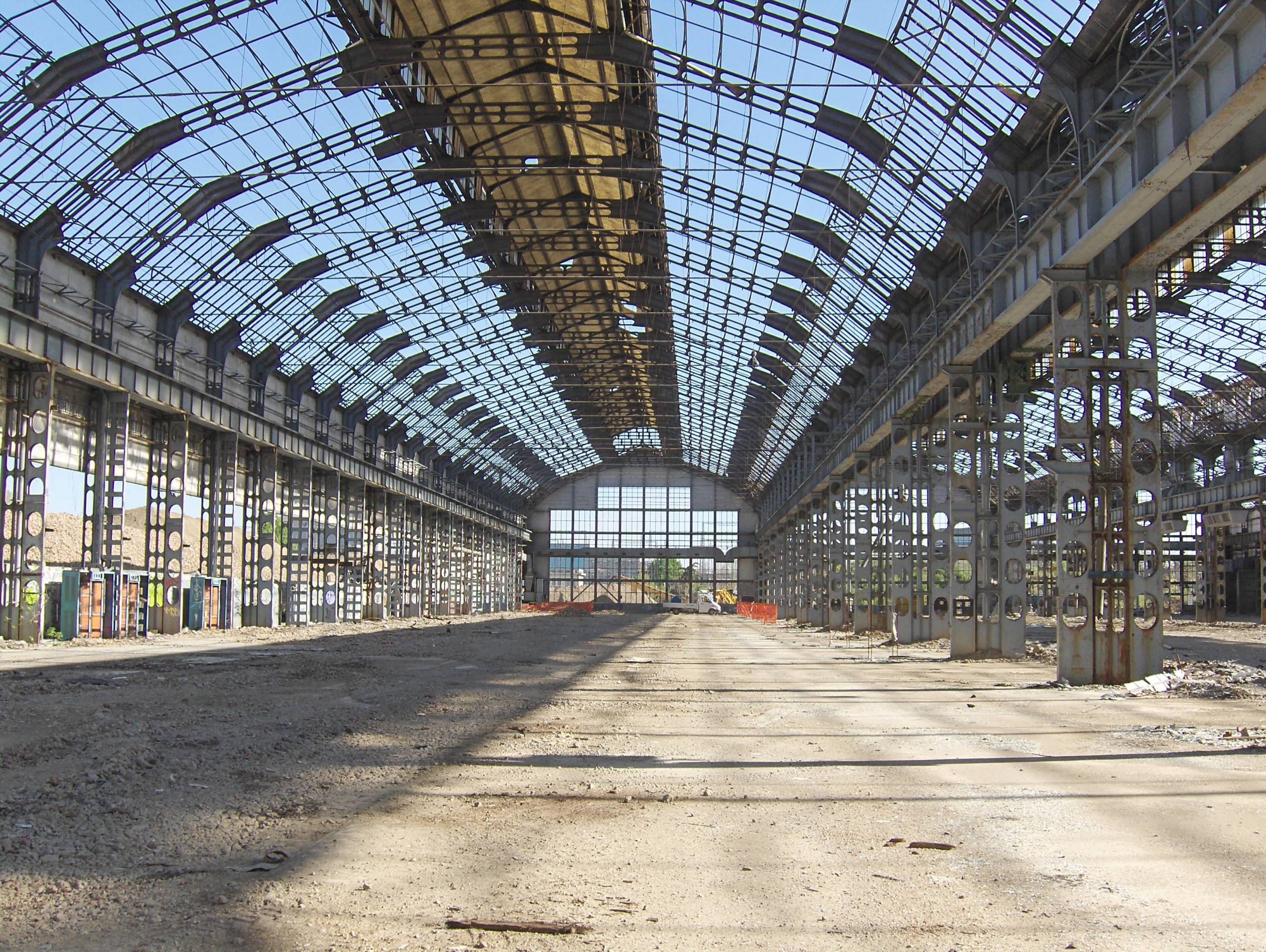Damage evaluation of ex Innocenti-Maserati industrial plant structures
The paper focuses on the evaluation of the actual mechanical and physical properties of the structural ele-ments of one of the dismissed buildings in the area of ex Innocenti-Maserati industrial plant, located in Mila-no, more precisely in the Lambrate-Rubattino district.
ABSTRACT: The paper focuses on the evaluation of the actual mechanical and physical properties of the structural elements of one of the dismissed buildings in the area of ex Innocenti-Maserati industrial plant, lo-cated in Milano, more precisely in the Lambrate-Rubattino district.
1 INTRODUCTION
The building under investigation, pictorially illustrat-ed in Fig. 1, was devoted, in the past, to the con-struction of the famous “Lambretta” motorcycle and, more recently, to the Innocenti-Maserati motorcars. The area, owned by AEDES s.p.a., is under the ap-proval process of new urban project which adopts the idea of preserving the steel skeleton of this huge building and of inserting, inside it, new buildings for different functions.
The investigations of damages, originated by chemi-cal and physics attacks, and the related structural as-sessment have to support the design of architects, evaluating the actual structural safety indices, by us-ing non destructive and semi destructive methods.
2 HISTORY OF INNOCENTI MILAN-LAMBRATE INDUSTRIAL COMPOUND
Ferdinando Innocenti was born in Pescia, Toscana, in 1881. In 1920, he studied the application of steel pipes and it’s innovative use in different fields.
In 1933, he started the production and the distribu-tion of steel pipes and connections of the well known Innocenti Scaffoldings System (originated by a system of the British Scaffolding Company). The Milano-Lambrate industrial area started its develop-ment in this year.
The “Fratelli Innocenti Società Anonima per Ap-plicazioni Tubolari in Acciaio”, became one of the most important Italian manufacturing reality. The production ranges from civil to industrial buildings, from cars to weapons components.  In 1944, part of Milano-Lambrate industrial build-ings were destroyed by bombing (see Figure 2). Nevertheless, at the and of the 2° worldwar, in 1948, the buildings were recovered and the production of most popular Lambretta started with a production of 250 units per day. Later on, the Mini Minor, in con-cession to the Britannic BMC, and a Spider, de-signed by Bertone, were constructed.
In 1944, part of Milano-Lambrate industrial build-ings were destroyed by bombing (see Figure 2). Nevertheless, at the and of the 2° worldwar, in 1948, the buildings were recovered and the production of most popular Lambretta started with a production of 250 units per day. Later on, the Mini Minor, in con-cession to the Britannic BMC, and a Spider, de-signed by Bertone, were constructed.
In the seventies the importance of Innocenti produc-tion declined and the factory in Milano-Lambrate has been sold to the British Leyland, later to Mase-rati.
In the nineties the factory in Milano-Lambrate was dismissed, and the area become one of the largest urban void in Milan.



